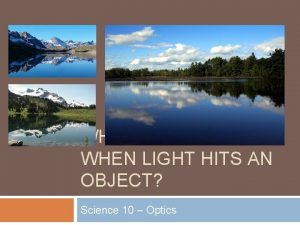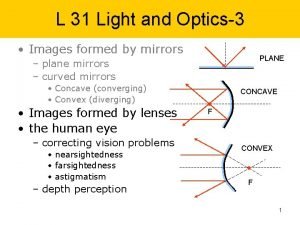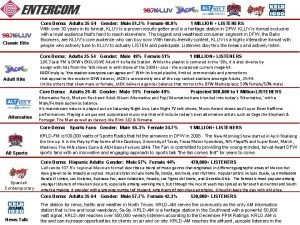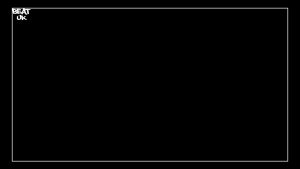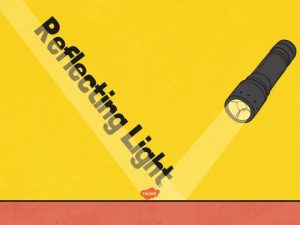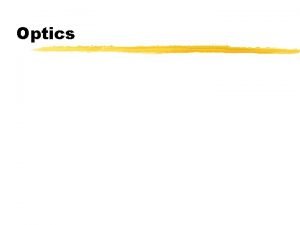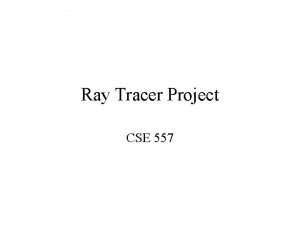Light Year One The light ray that hits








- Slides: 8

Light Year One


The light ray that hits the mirror or other object is described as the incident ray, and the ray of light that bounces off is known as the reflected ray Reflection is when light bounces off a surface, changing the direction of a ray of light. All objects reflect light; smooth and shiny surface reflect all the rays of light at the same angle, rather than scattering the rays of light like rough or dull surfaces. incident ray

When rays of light reflect, they obey the law of reflection: The angle of incidence always equals the angle of reflection. The angle of incidence is the angle between the normal line and the incident ray of light. The red dashed line is called the ‘normal’ line. It is drawn at a right angle, or perpendicular to the reflector. angle of incidence angle of reflection The angle of reflection is the angle between the normal line and the reflected ray of light.

If you have the equipment at home try this challenge to prove the law of reflection! Use modelling clay to stand a mirror up on a piece of white paper. Make a very narrow slit in a piece of card. Dim the lights and shine a torch through the slit towards the mirror. On the white paper, look for the incident ray and the reflected ray of light. You may have to play around with the angle of the torch and the distance you hold it from the mirror.

Use a pencil and ruler to draw the incident and reflected rays on the paper. Draw a dashed line perpendicular to the mirror, from the point where the incident and reflected rays meet. This is the normal line. Use a protractor to measure the angle formed between the incident ray and the normal line. On the white paper, look for the incident ray and the reflected ray of light. You may have to play around with the angle of the torch and the distance you hold it from the mirror. They should be equal. Whenever light is reflected from a surface, it obeys this law.

The law of reflection is what allows us to see an object reflected in a mirror. Look at the way light travels to enable the boy to see his face reflected in the mirror: 1. Light from the bulb hits the boy’s face and bounces off. 2. The light reflected from the boy’s face hits the mirror. 3. The light reflected from the mirror travels to the boy’s eyes, so he can see the image of his face reflected in the mirror. 1 2 3

How is light travelling to enable the boy to see the computer behind the wall? wall
